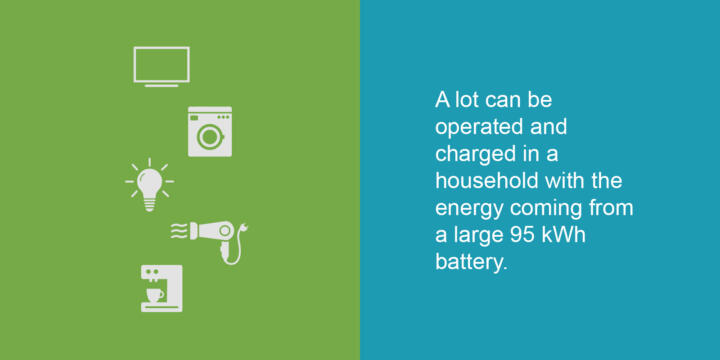Electricity from an e-car
On days when the wind blows endlessly, ...
... and the sun just shines from the sky, ...
... large amounts of green energy often remain unused due to a lack of storage.
Electric cars could be real game changers here.
More precisely, the powerful batteries.





95 times turning on a convection for 30 minutes
9,500 times charging a smartphone
5,700 minutes operating a 1,000-watt electric water kettle
31 days operating a refrigerator
40 hours vacuum cleaning
544 hours running a washing machine

The e-car as an energy supplier
Blaring TV sets, humming dishwashers, glowing toasters: none of these would be possible without electric energy. In the future, power might be supplied directly by our own electric cars, provided that they’re not just plugged into regular outlets but integrated into the electrical systems of our homes via wallbox chargers.
Today the utopia of the morning is the reality of the afternoon
Truman Capote, American novelist
The technical term for this is bi-directional charging or Vehicle to Home (V2H). The battery of an electric car as a smart and decentralized storage medium is a really hot topic in the energy transition context. The reason is that increasing registrations of electric cars logically increase the number of mobile storage systems as well. Audi and the Hager Group are currently pursuing this vision in an innovative research project. V2H offers major advantages particularly in interaction with domestic photovoltaic systems. Surplus power can be fed into intermediate storage and supplied as needed, for instance at night when solar collectors don’t produce any electricity. For example, the 95-kWh battery of an Audi e-tron would be able to self-sufficiently supply a one-family home with green electricity for roughly one week.


